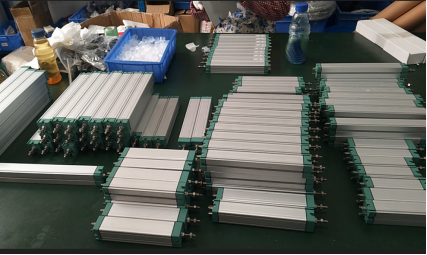The linear position sensor
The function of the linear displacement sensor is to convert the linear mechanical displacement into an electrical signal. In order to achieve this effect, the variable resistance slide rail is usually fixed at the fixed position of the sensor, and different resistance values are measured by the displacement of the slide on the slide rail. The sensor slide rail is connected to a steady-state DC voltage, allowing a small current of microamperes to flow, and the voltage between the slide and the starting end is proportional to the length of the slide. Using the sensor as a voltage divider minimizes the need for accuracy in the overall resistance of the slide since changes in resistance due to temperature changes do not affect the measurement.
Tie rod
Universal pull rod conductive plastic film series, effective stroke 75mm ~ 1250mm, both ends have 4mm buffer stroke, accuracy 0.05% ~ 0.04%FS. The surface of the shell is anodized, anti-corrosion; built-in conductive plastic measurement unit, no temperature drift, long life; with automatic electrical grounding function. The sealing level is IP67, and the DIN430650 standard plug and socket can be used in most general occasions; the ball head of the tie rod has a 0.5mm automatic centering function, and the limit movement speed is allowed to be 10m/s.
sliding
Universal slider conductive plastic film series, effective stroke 75mm ~ 3000mm, both ends have 4mm buffer stroke, accuracy 0.05% ~ 0.02%FS. The surface of the shell is anodized, anti-corrosion; built-in conductive plastic measurement unit, no temperature drift, long life; with automatic electrical grounding function. The sealing level is IP54 (IP57 when installed downwards), and the DIN430650 standard plug and socket can be applied to most general occasions, especially the occasions where the length direction is limited and the alignment is difficult; the tie rod with the ball head has a 10mm automatic correction function, The allowable limit movement speed is 10m/s.


